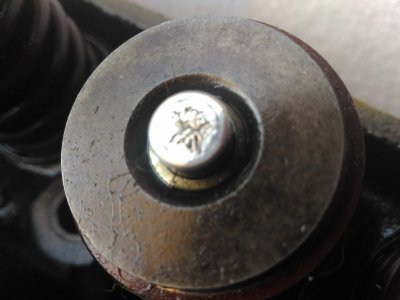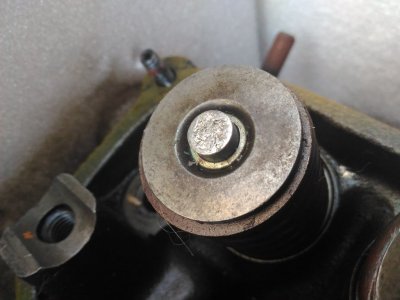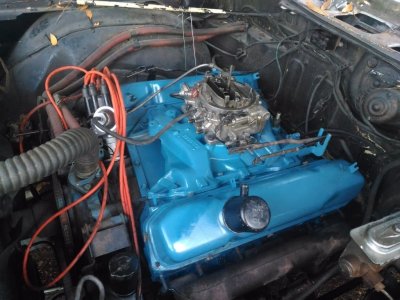Jeremy MacDonald
Member
Hi all. I have a small issue here: I replaced the cylinder heads on my 440. I did it with the engine still in the car. The replacements are a later version of the head (from the tnt version, but I'm not trying to increase the power - just run new heads, coz there were cracks in th eold ones above some intake valves, although good compression (~165lbs) and I replaced all the exhaust valves and installed new valve springs. I didn't touch anything else - didn't pull out the lifters because I wasn't having any lifter noise before this job. Well, after replacing several of the rocker arms, I then installed the pushrods and tightened down the rocker shaft. As I did so, I noticed that it was pushing down slightly all the vale stems - even those for closed valves. How far down? Not far - I'd say about 1/16" but I can see the valve stems moving down that distance as I tighten the rocker arm shaft bolts. I decided to do a compression test to find out if the valves were all closing and sure enough I only get about 125lbs right across all cylinders.
So I need the lifters to bleed down, I wouldn't have had any issue if I'd thought to pull out each lifter and collapse it before re-assembling then engine.
So here's my question: will the lifters bleed down by themselves to the correct level once I get the engine going and the oil warms up?... or do I have to pull them all out and manually collapse them in order for them to pump back up the the correct zero-lash position?
Many thanks!
So I need the lifters to bleed down, I wouldn't have had any issue if I'd thought to pull out each lifter and collapse it before re-assembling then engine.
So here's my question: will the lifters bleed down by themselves to the correct level once I get the engine going and the oil warms up?... or do I have to pull them all out and manually collapse them in order for them to pump back up the the correct zero-lash position?
Many thanks!



















